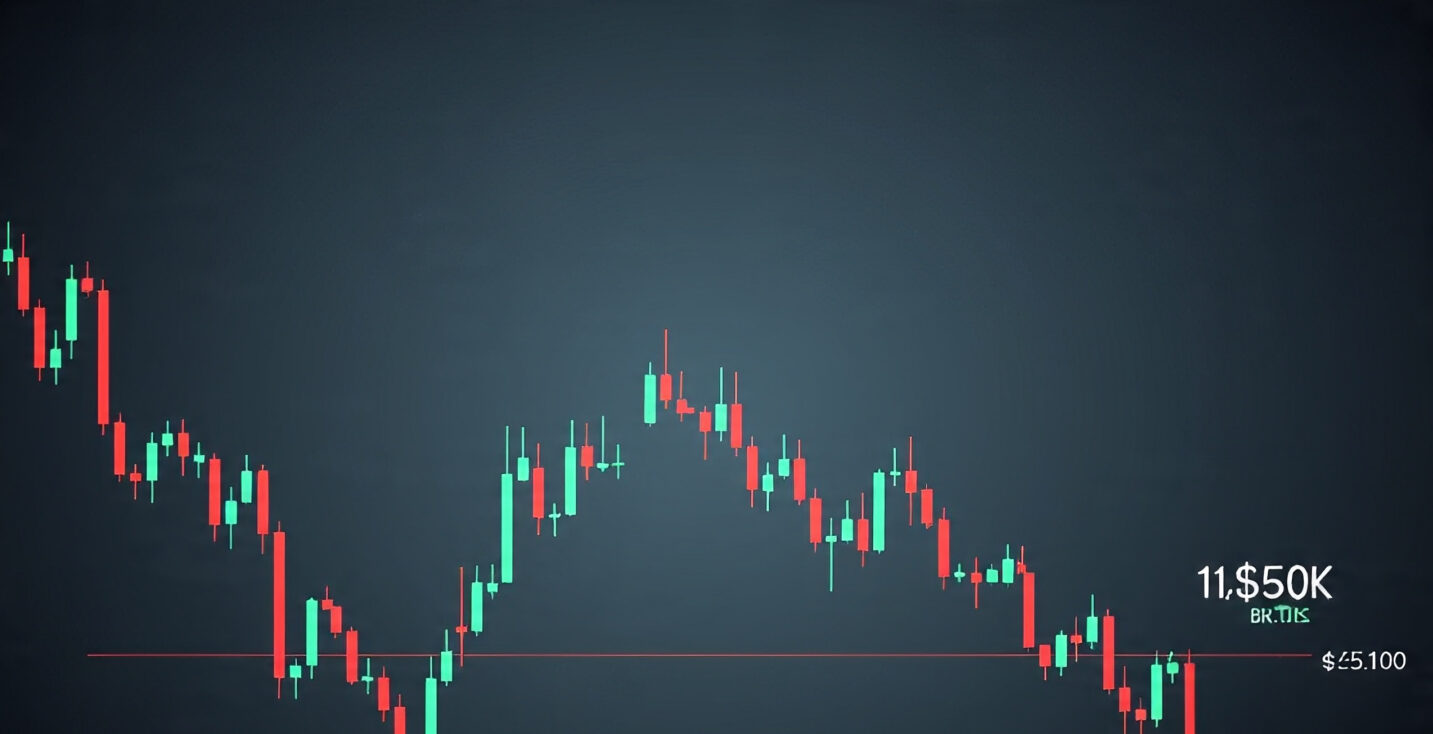The financial landscape is experiencing unprecedented turbulence as global bond markets face their most significant crisis in decades. Traditional safe-haven assets are crumbling under the weight of persistent inflation, aggressive monetary policies, and mounting sovereign debt concerns. Against this backdrop of financial uncertainty, Bitcoin price prediction models are pointing toward a potential surge that could catapult the world’s leading cryptocurrency to the $150K BTC milestone sooner than many anticipated. As institutional investors scramble to preserve wealth amid collapsing bond yields and currency devaluation fears. Bitcoin’s institutional adoption has accelerated dramatically.
The convergence of macroeconomic factors, including central bank digital currency developments. regulatory clarity improvements and the ongoing digitization of financial assets. creates a perfect storm that could make Bitcoin reaching $150K not just a possibility, but an inevitable outcome. This comprehensive analysis examines the intricate relationship between traditional financial markets and cryptocurrency valuation. Exploring how the current bond market collapse serves as a catalyst for Bitcoin’s next major price movement. We’ll delve into technical analysis patterns, institutional investment flows and macroeconomic indicators that suggest. Bitcoin’s journey to six-figure territory may be accelerating faster than even the most bullish predictions anticipated.
The Great Bond Market Unraveling Setting the Stage for Bitcoin’s Rise
The Current Bond Crisis
The global bond market crisis represents one of the most significant financial disruptions since the 2008 financial meltdown. Government bonds, traditionally considered the safest investment vehicles, are experiencing unprecedented volatility as central banks worldwide grapple with inflation rates that have consistently exceeded target levels. The Federal Reserve’s monetary policy decisions, coupled with similar actions by the European Central Bank and Bank of Japan, have created a domino effect that’s reshaping investor behavior across all asset classes.
Bond yields have fluctuated wildly, with the 10-year Treasury yield experiencing swings not seen in decades. This volatility has eroded confidence in fixed-income securities, forcing institutional investors to seek alternative stores of value. The cryptocurrency market analysis reveals that Bitcoin has emerged as the primary beneficiary of this capital flight from traditional bonds.
Why Traditional Safe Havens Are Failing
The failure of traditional safe havens extends beyond simple yield concerns. Inflation hedging has become paramount for institutional portfolios, and government bonds have proven inadequate in protecting purchasing power. Real yields on many sovereign bonds have turned negative, meaning investors are guaranteed to lose money in inflation-adjusted terms. This scenario has created what economists term a “financial repression” environment, where savers are penalized for holding traditional assets.
Gold vs Bitcoin comparisons have become increasingly relevant as both assets compete for the “digital gold” narrative. However, Bitcoin’s superior portability, divisibility, and growing institutional infrastructure have given it significant advantages over traditional precious metals in the current environment.
Bitcoin’s Institutional Revolution The $150K Catalyst
Corporate Treasury Adoption Accelerates
The most significant driver behind Bitcoin price prediction models targeting $150K lies in accelerating corporate adoption. Major corporations have begun allocating portions of their treasury reserves to Bitcoin, following the pioneering examples of MicroStrategy and Tesla. This Bitcoin institutional adoption trend has created sustained buying pressure that fundamentally alters Bitcoin’s supply-demand dynamics.
Corporate Bitcoin holdings have grown exponentially, with companies citing currency devaluation concerns and the need for inflation-resistant assets as primary motivations. The network effects of this institutional adoption create a self-reinforcing cycle where increased corporate participation legitimizes Bitcoin for other institutional players.
ETF Inflows and Regulatory Clarity
The approval and success of Bitcoin ETFs have democratized institutional access to cryptocurrency exposure. These investment vehicles have channeled billions in traditional investment capital into Bitcoin markets, creating sustained upward pressure on prices. SEC Bitcoin regulations have provided the clarity that institutional investors required to increase their allocations significantly.
The cryptocurrency regulation landscape has evolved favorably, with major jurisdictions implementing frameworks that protect investors while allowing innovation to flourish. This regulatory certainty has removed a significant barrier to institutional adoption and paved the way for even larger capital inflows.
Technical Analysis The Path to $150K BTC

Chart Patterns and Market Structure
Bitcoin technical analysis reveals compelling patterns that support the $150K BTC price target. The cryptocurrency has formed a massive ascending triangle pattern on longer timeframes, with strong support levels established around key Fibonacci retracement levels. Bitcoin chart patterns indicate that the current consolidation phase is building energy for the next major upward move.
Bitcoin resistance levels have been systematically broken as institutional buying provides sustained momentum. The Bitcoin support levels continue to rise, creating a staircase pattern that suggests healthy price appreciation rather than speculative bubbles.
On-Chain Metrics and Network Fundamentals
Bitcoin on-chain analysis provides compelling evidence for continued price appreciation. Metrics such as the Stock-to-Flow model, Network Value to Transactions ratio, and active address counts all support bullish price projections. Bitcoin mining economics remain healthy, with hash rate reaching all-time highs despite price volatility.
The Bitcoin halving cycle effects continue to play out, with supply reduction mechanisms creating natural scarcity that supports higher valuations. Historical patterns suggest that the full impact of halving events typically materializes 12-18 months after the actual halving occurs.
Macroeconomic Forces Driving Bitcoin Adoption
Central Bank Digital Currencies and Bitcoin
The development of Central Bank Digital Currencies (CBDCs) has paradoxically increased interest in decentralized cryptocurrencies like Bitcoin. As governments move toward digital surveillance currencies, privacy-conscious investors and institutions are turning to decentralized finance alternatives. This dynamic has created additional demand for Bitcoin as a hedge against potential government overreach.
Digital asset adoption by central banks has also validated the underlying blockchain technology, making institutions more comfortable with cryptocurrency investments. The crypto market trends show increasing correlation between CBDC developments and Bitcoin price movements.
Global Economic Uncertainty and Currency Debasement
Economic uncertainty continues to plague global markets as governments struggle with unsustainable debt levels and persistent inflation. Currency debasement concerns have reached critical levels, with many fiat currencies losing significant purchasing power against real assets. Bitcoin’s fixed supply cap of 21 million coins makes it an attractive alternative to currencies subject to unlimited printing.
Geopolitical risks have also contributed to Bitcoin’s appeal as a neutral, borderless store of value. International sanctions and trade wars have highlighted the vulnerabilities of traditional financial systems, making Bitcoin’s decentralized nature increasingly valuable to global institutions.
Market Psychology and Sentiment Analysis
Fear and Greed Indicators
Bitcoin market sentiment analysis reveals a complex psychological landscape where traditional fear and greed indicators are being recalibrated for institutional participation. Cryptocurrency market psychology has evolved beyond retail speculation to include sophisticated risk management strategies employed by professional investors.
The Bitcoin volatility that once deterred institutional investors has become more acceptable as traditional assets have experienced similar uncertainty. This normalization of volatility has removed psychological barriers to Bitcoin adoption at the institutional level.
Retail vs. Institutional Behavior Patterns
The distinction between retail and institutional Bitcoin investment strategies has become crucial for price prediction models. Institutional investors tend to buy and hold for longer periods, creating more stable support levels. Bitcoin price movements increasingly reflect institutional rebalancing rather than emotional retail trading.
Risk Factors and Potential Obstacles

Regulatory Risks and Government Intervention
Despite improving cryptocurrency regulation, the risk of adverse government action remains a significant consideration for Bitcoin price prediction models. Potential scenarios include mining restrictions, transaction taxes, or outright bans in major economies. However, the increasing institutional involvement has created powerful lobbying interests that oppose such measures.
Technical and Scalability Challenges
Bitcoin scalability remains a long-term consideration, though Layer 2 solutions like the Lightning Network are addressing transaction throughput limitations. Bitcoin technology continues to evolve, but the pace of development must keep up with growing institutional demands.
Market Manipulation and Whale Activity
Large Bitcoin holders continue to have significant influence over price movements. Bitcoin whale activity can create substantial volatility that challenges institutional risk management frameworks. However, as the Bitcoin market grows and institutional participation increases, the influence of individual large holders diminishes proportionally.
Timeline and Probability Assessment
Short-term Catalysts (6-12 months)
Several factors could accelerate Bitcoin’s path to $150K BTC within the next year. These include additional corporate treasury adoptions, successful ETF launches in new jurisdictions, and continued deterioration in traditional financial markets. Bitcoin bull market characteristics suggest that rapid price appreciation phases can occur when multiple catalysts align.
Long-term Structural Changes (1-3 years)
The structural transformation of global finance toward digital assets provides strong fundamental support for sustained Bitcoin price appreciation. Cryptocurrency adoption trends indicate that Bitcoin’s role as a reserve asset will continue expanding regardless of short-term volatility.
Conclusion
The convergence of collapsing global bond markets, accelerating Bitcoin institutional adoption, and fundamental shifts in monetary policy creates an unprecedented environment for Bitcoin price prediction. The question of whether Bitcoin will reach $150K appears to be shifting from “if” to “when” as traditional financial systems show increasing signs of strain.
The technical, fundamental, and macroeconomic factors analyzed throughout this comprehensive assessment point toward significant upward pressure on Bitcoin prices. While risks remain, the structural changes occurring in global finance suggest that Bitcoin’s role as a digital store of value and inflation hedge will continue expanding.
See more: Today’s Bitcoin News: 2025 Price Predictions & Market Analysis



